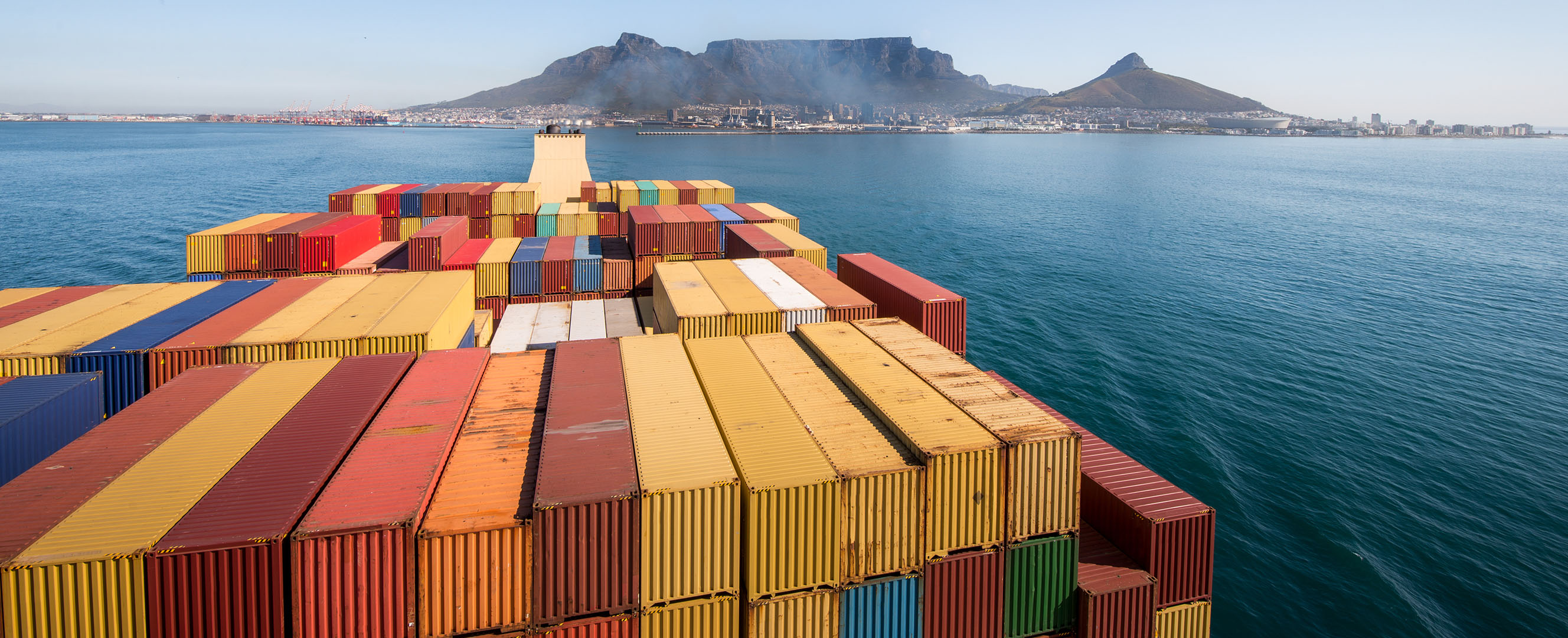STRAIGHT TALK
Jihad Azour and Abebe Aemro Selassie talk about the potential of unified trade across Africa
The African continent is on the threshold of a new era. African nations have collectively embarked on a path toward deeper trade integration, with the African Continental Free Trade Area (AfCFTA) as a catalyst to unlock this potential and reshape the continent's trade landscape. This ambitious initiative aims to dismantle barriers to trade and create a unified trade landscape across Africa.
We should commend policymakers for this landmark initiative. But realistically, it was in part a response to rising cross-border trade, investment, and financial flows within the region as economic activity strengthened over the years. Take trade flows within the East African Community, for example. Over the past two decades, the growth of exports within East Africa has been nothing short of extraordinary, expanding more than eightfold and significantly surpassing the growth rate of its exports to the rest of the world.
Game changer
The AfCFTA, launched in January 2021, represents a historic opportunity for African nations to realize their full economic potential by dismantling barriers to trade and improving the broader trade environment. Import tariffs within Africa are higher than those of other regions, averaging 6 percent; nontariff measures amount to the equivalent of an import tariff of 18 percent. The trade environment, including the transportation and telecommunications infrastructure, access to financing, and customs and border processes, also remains challenging.
By reducing barriers to trade, the AfCFTA has the potential to fuel economic growth, generate employment, and improve living standards across the continent. The gains from greater trade integration will be amplified if the reduced tariff and nontariff barriers envisaged under the AfCFTA are accompanied by reforms to improve the trade environment. Median goods trade within Africa could increase by an impressive 53 percent, while trade with the rest of the world could rise by 15 percent over the long term when the reform measures are fully implemented. These figures translate into tangible gains, with the real per capita GDP of the median African country rising more than 10 percent and an estimated 30–50 million people lifted out of extreme poverty.
Beyond the realm of goods, the AfCFTA holds great potential for diversifying Africa’s export basket and promoting services trade. A stronger trade infrastructure and better access to financing can boost services exports by some 50 percent, enabling African nations to tap into growing global demand for skill-intensive, high-value-added services. Currently, services account for a relatively low share of Africa’s total exports, with traditional services dominating the market. However, the rise of digitalization and technological advancements offer an opportunity to reshape the sector and capitalize on emerging sectors such as telecommunications. Embracing these trends can enhance Africa’s competitiveness in the global services market and drive sustainable economic growth.
The AfCFTA also gives African countries access to regional and global value chains, a critical step toward economic diversification and industrialization. Africa’s exports to the rest of the world remain heavily tilted toward commodities, but regional trade is much more diversified. Initiatives such as textile manufacturing offshoring by South African retailers to neighboring countries exemplify the potential for building regional value chains. By expanding these efforts and capitalizing on the opportunities presented by the AfCFTA, African nations can tap into their comparative advantage, drive innovation, and foster a more resilient and diversified economy.
In an era of rapid technological change and an evolving global economy, trade integration can enhance Africa’s resilience to shocks and position the continent for long-term success. Digitalization, for instance, can significantly reduce trade costs by streamlining customs processes and facilitating cross-border payments. Electronic cargo-tracking systems and cloud-based payment systems offer a glimpse of technology’s ability to improve trade efficiency. Diversification of export destinations thanks to AfCFTA implementation, moreover, means less risk from shifting global trade patterns and greater economic resilience.
Navigating the trade landscape
While this vision of trade integration in Africa sounds promising, it is important to acknowledge the challenges that lie ahead.
Africa’s vast potential requires a robust infrastructure network. Inadequate transportation systems, limited access to reliable energy, and logistical deficiencies hinder the efficient movement of goods. To foster regional connectivity and facilitate trade flows, significant investments in infrastructure are imperative.
Despite subregional trade agreements, non-tariff barriers such as customs inefficiencies and regulatory disparities persist, impeding the smooth flow of goods and services. Simplified digital processes, standardized customs procedures and product certifications, and harmonization of regulatory frameworks are vital for seamless trade within the continent.
The digital divide poses a significant challenge to trade in both goods and services in Africa. Limited digital infrastructure and inadequate access to affordable internet services hinder cross-border trade and the growth of e-commerce. To harness the power of digital trade, investments in connectivity and digital infrastructure are paramount.
Firms—particularly small and medium enterprises—often face challenges in access to financing, which limits their participation in regional trade. For instance, the average price of a letter of credit in West African countries is 2–4 percent of the transaction value, much higher than 0.25–0.5 percent in advanced economies. Promoting financial inclusion and providing affordable credit options for firms could fuel their growth and enable their participation in intra-African trade.
For the growing workforce in Africa to fully seize the opportunities presented by trade integration, governments must invest in their education and skills development and ensure robust social protection measures to shield the most vulnerable. As digitalization permeates various sectors, targeted training programs to equip the workforce with skills in digital technologies could position Africa to tap into the expanding digital economy. Protecting those adversely affected during the transition to higher growth is essential to ensure inclusive and sustainable development. Social safety nets must be enhanced in a way that efficiently targets the most vulnerable in a fiscally sustainable way.
The continent can address these challenges through significant investment in physical and human capital—not an easy task given the current funding squeeze. African countries already face high debt, and the economic fallout from the COVID-19 pandemic and Russia’s war in Ukraine—which fueled inflation and caused global monetary policy tightening—has just made things worse. African governments must strike a delicate balance between prioritizing critical infrastructure investments and adopting prudent debt management practices to ensure debt sustainability.
In addition, governments must foster a robust economy and a business environment characterized by sound policies, effective governance, and reduced bureaucracy in order to attract investment. Partnerships with the international community and the private sector would raise the revenue needed for infrastructure projects.
Looking ahead
As Africa embarks on the path of trade integration, the continent stands poised to unlock its immense economic potential. Full AfCFTA implementation, coupled with infrastructure development, human capital investment, and efforts to bridge the digital divide, would signal a turning point for trade integration in Africa. Realizing the full benefits requires a concerted effort by African governments, private sector stakeholders, and international partners to address infrastructure gaps, overcome regulatory hurdles, and foster a viable trade environment. With the right policies and collective commitment, Africa can use trade integration to drive sustainable development and create a prosperous future for its people.
As the continent positions itself to be a vibrant hub of commerce, the rewards will extend beyond its borders, benefiting global trade and invigorating economies worldwide. The journey toward trade integration in Africa is not only an opportunity for economic growth but also a testament to the continent’s determination to chart its own path toward prosperity and inclusivity.
Opinions expressed in articles and other materials are those of the authors; they do not necessarily reflect IMF policy.









